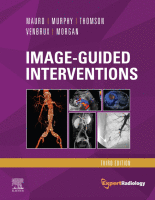Physical Address
304 North Cardinal St.
Dorchester Center, MA 02124

Hemodialysis is a tremendous socioeconomic burden within industrialized countries, with costs exceeding 1.5 billion dollars in Europe and within 2.9 billion dollars in annual costs in the United States. A large and essential component for delivery of dialysis is a…

Thirty million people in the United States have chronic kidney disease and millions more are at increased risk. In 2015 in the United States alone, 468,000 patients required dialysis (peritoneal dialysis or hemodialysis) for end-stage renal disease. Because many of…

Large numbers of patients depend on hemodialysis for their survival. Worldwide the number of patients receiving renal replacement therapy is expected to rise from 2.6 million to 5.5 million by 2030, with most of the growth expected to occur in…

When compared with esophageal variceal bleeding, bleeding from gastric varices is usually more severe and difficult to control. Gastric varices are classified into two types: gastroesophageal varices and isolated varices. Gastroesophageal varices located at the cardia are considered part of…

Cirrhosis and its complications are common throughout the world. Hepatitis B and C and alcohol abuse account for about 90% of cases. Risk of death comes from variceal bleeding, progressive liver failure, and hepatoma. Key quality-of-life issues include management of…

Primary hyperparathyroidism (PHPT) is an endocrine disorder characterized by autonomic overproduction of intact parathyroid hormone. It is often asymptomatic and identified through routine biochemical screening demonstrating hypercalcemia with elevated or upper normal levels of circulating intact parathyroid hormone. Osteoporosis may…

Adrenal venous sampling is almost exclusively used in the setting of excessive aldosterone production to establish and localize unilateral aldosteronism before surgery. Excessive excretion of aldosterone may be primary due to a tumor (Conn syndrome) or hyperactivity of the outer…

Renal vein renin (RVR) sampling can help determine whether renal artery stenosis is a significant contributor to a patient’s hypertension. It can also help determine which patients with renal vascular hypertension (RVH) may benefit from revascularization by percutaneous or surgical…

Whether present in the vasculature or in the soft tissues, foreign bodies left unchecked can erode into adjacent vital organs or migrate into remote locations. There are extreme reports of a lumboperitoneal shunts, ingested toothpicks, septal occluders, vertebroplasty cement, Onyx…

Epidemiology Chronic venous disease (CVD), which includes varicose and spider veins, is extraordinarily common: approximately 22%–29% of the adult Western population has varicose veins and 5% has more advanced CVD findings. Many patients with CVD have symptoms that may interfere…